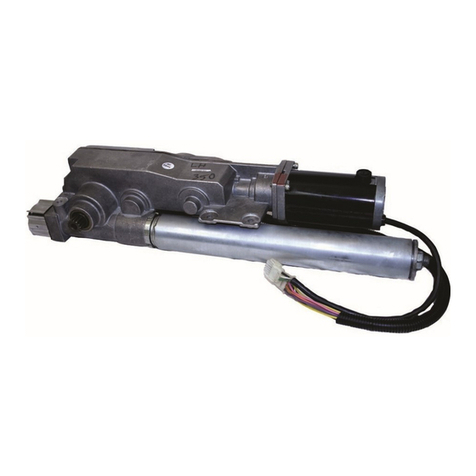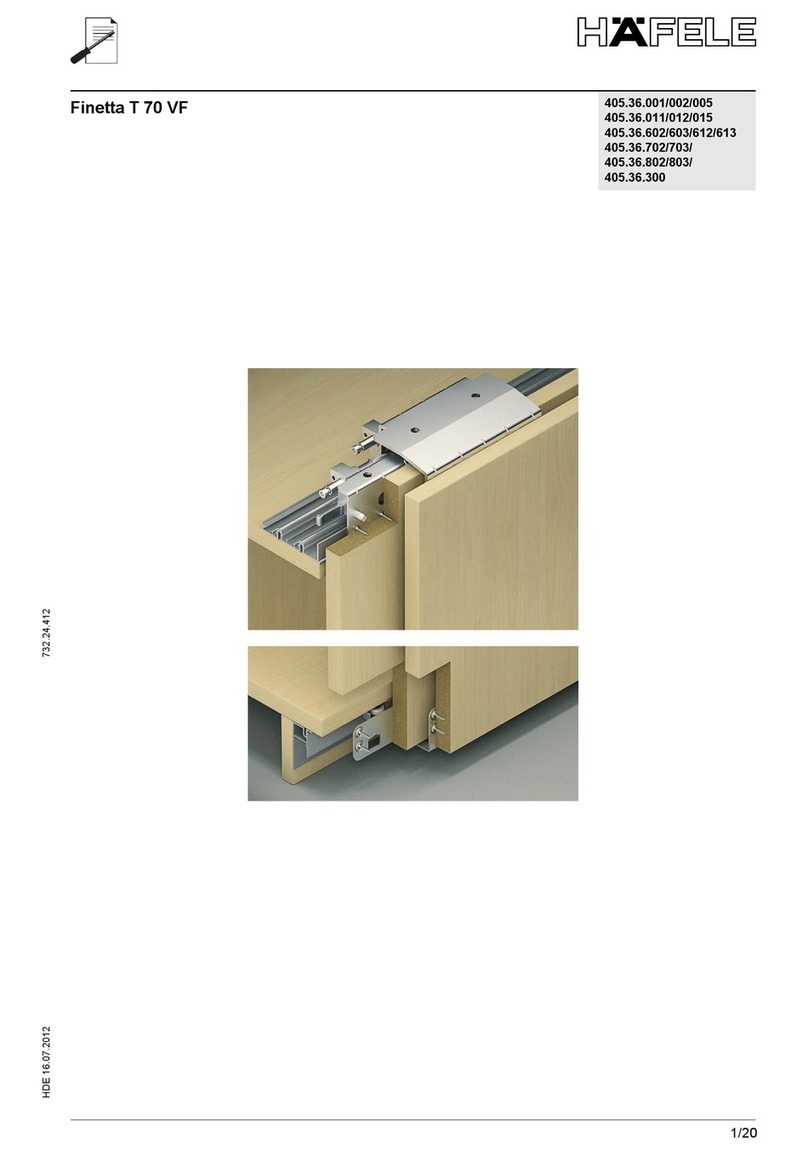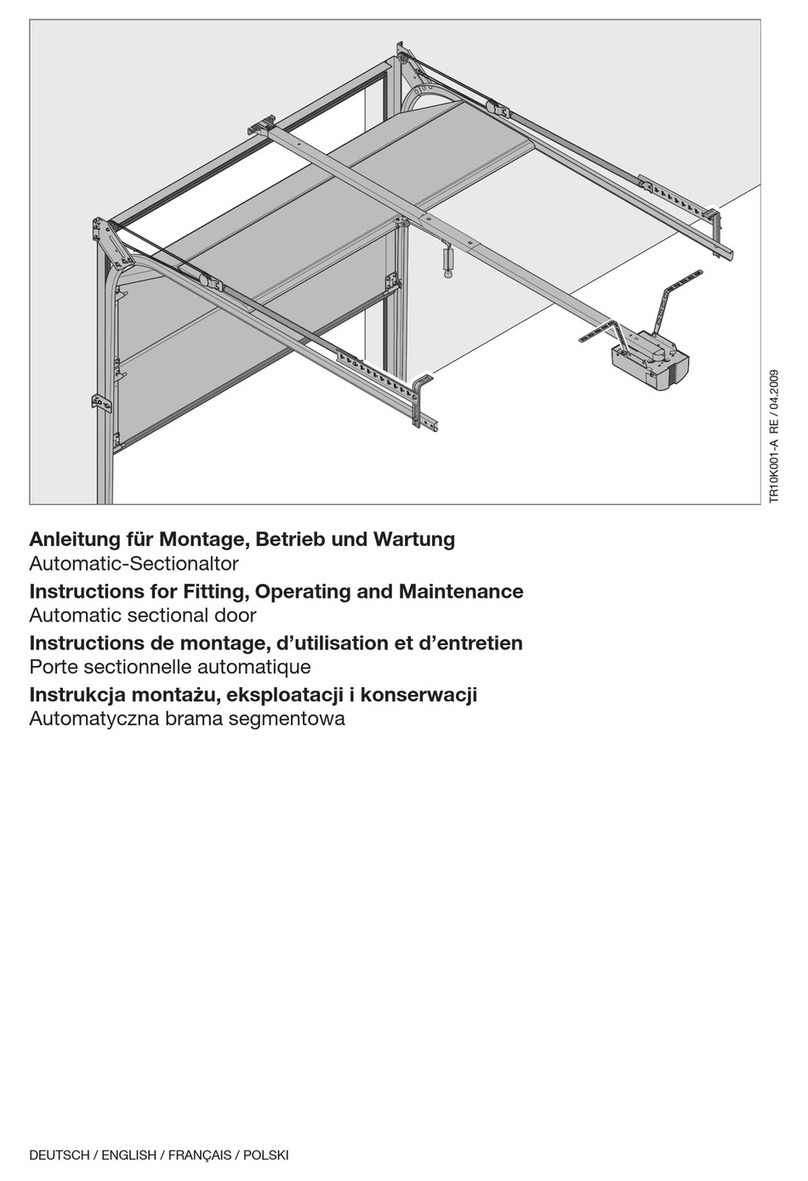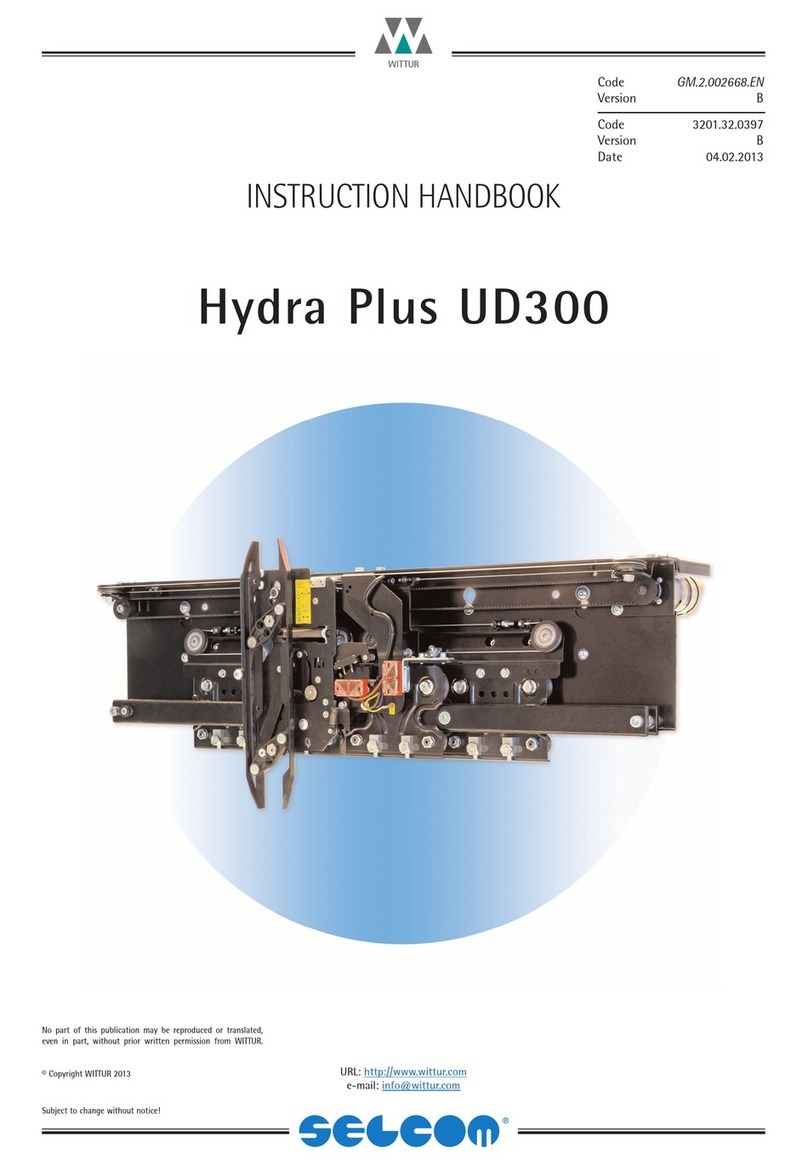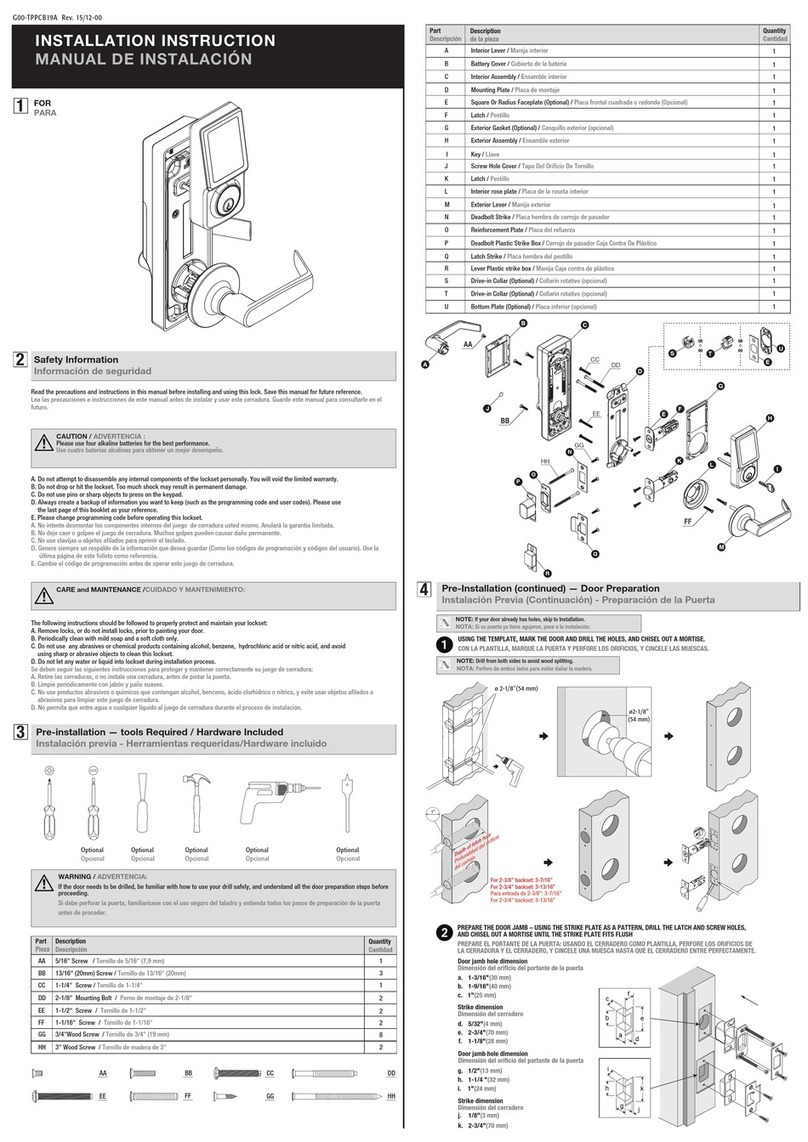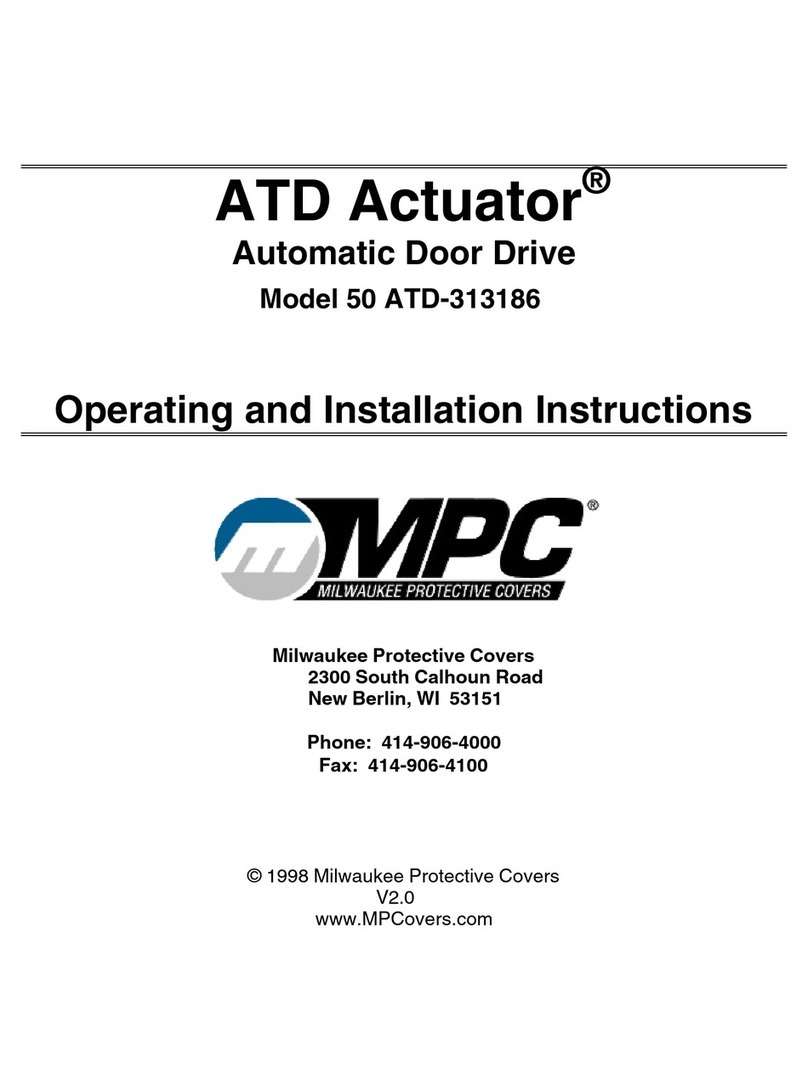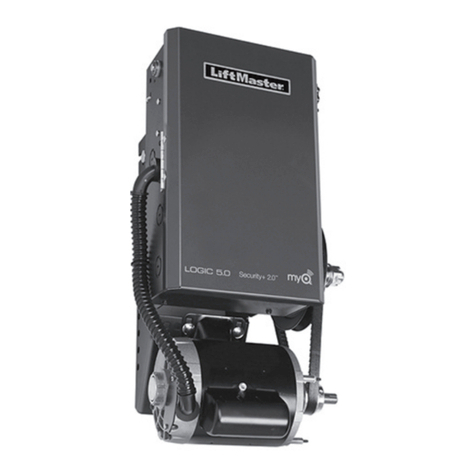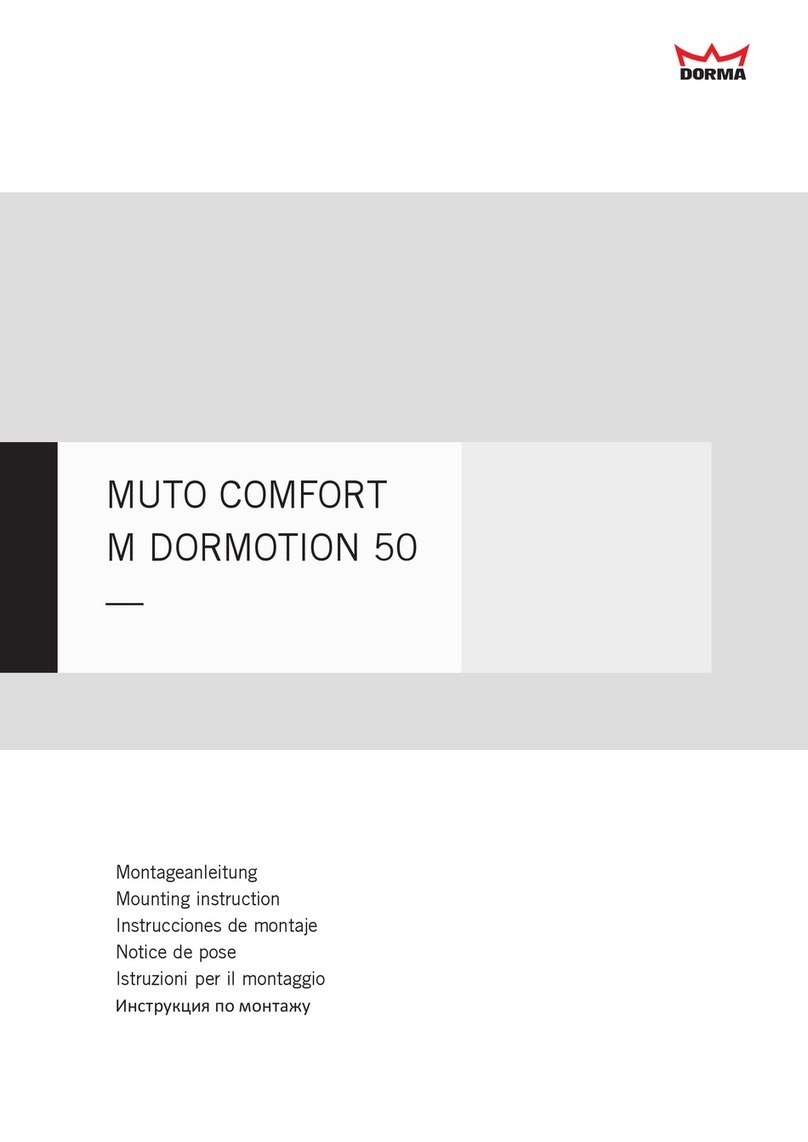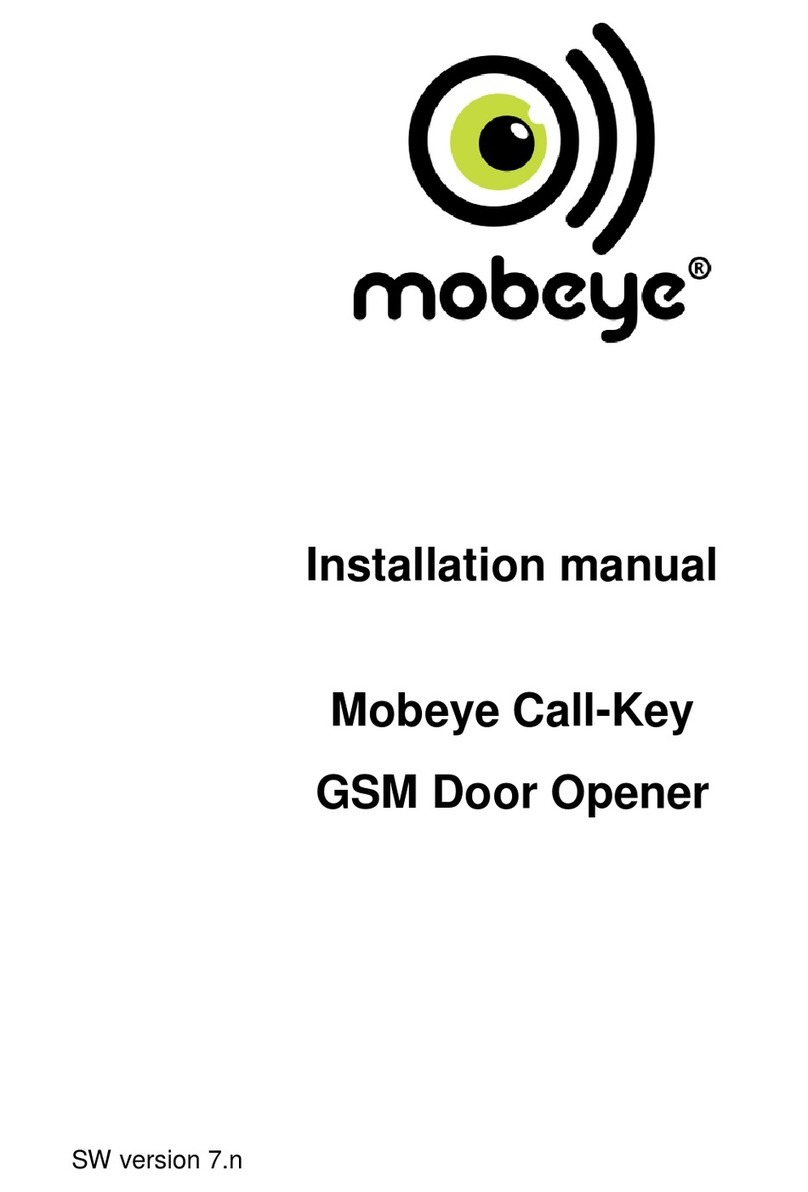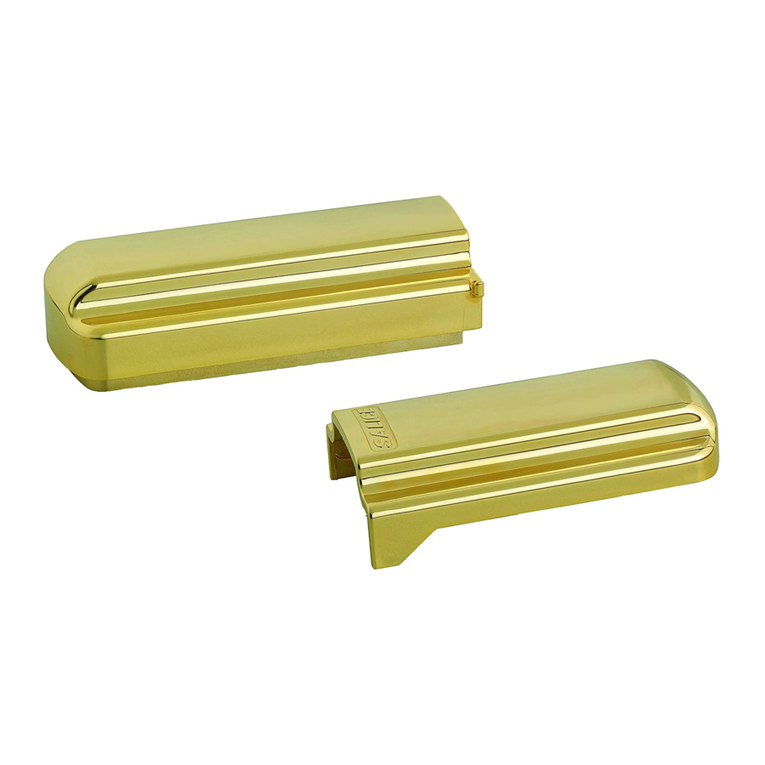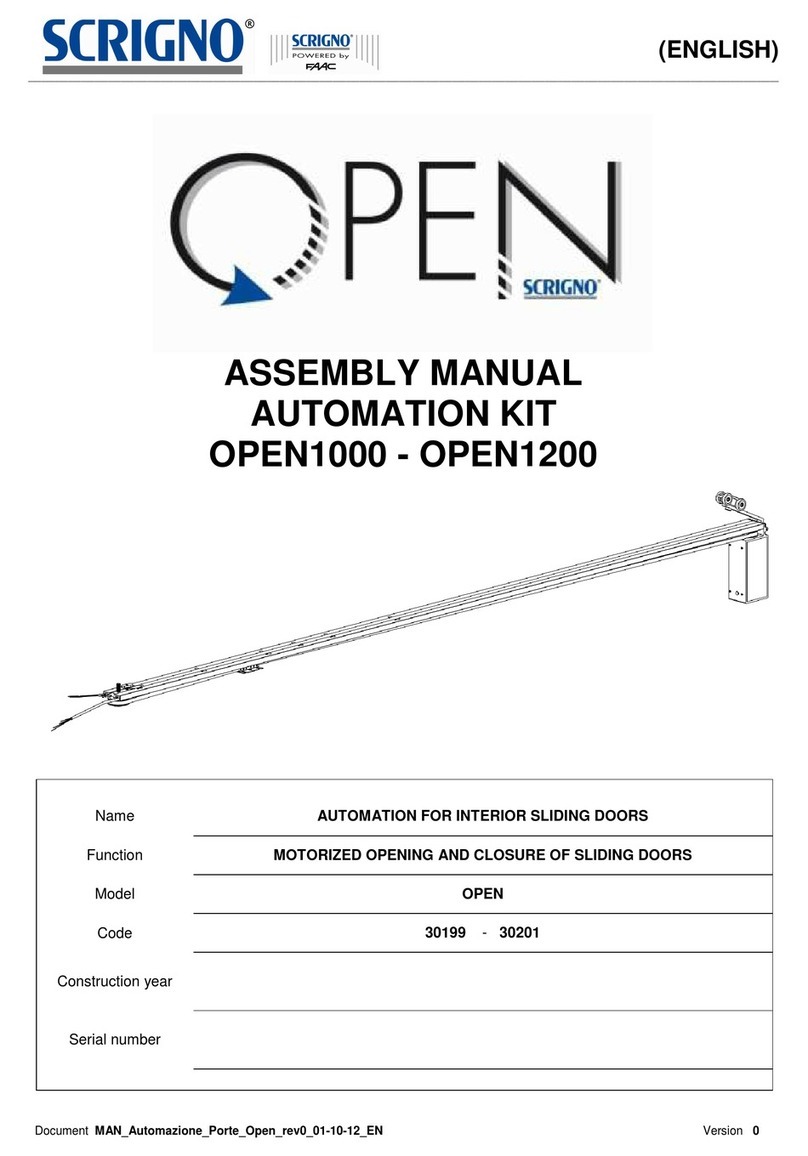
SICHERHEITSKRITERIEN BEFESTIGUNGSHÖHE (Fig. G)
1 Bevor anfangen alle montierungen führungen es ist notwending dieses manual Befestig ungs höhe des Trieb werk s unte r Berü cksi chti gung der Torform und
Vorsichtig lesen. Befestigungsmöglichkeiten auf diesem bestimmen.
2 Kontrollieren dass den Operator erfullt Ihre Verwendungen a) Wenn die Torstruktur robust ist, kann man ohne Einschränkungen auf beliebiger
Höhe positionieren.
3 Und Kontrollieren Sie auch: b) Bei einer leichten Struktur muss man das Stellglied so nahe wie
- Die Scharnieren der Glittertor sind in gut Bedigungen und gut eingeschmiert. möglich an der Mittellinie des Tors (bezogen auf die Höhe) halten.
- Der Glittertor hat mechanishen Befestigung in Offnung und in Verschluss. Stellung 1 Mittlere Tortraverse
- Der Glittertor zu UNI 8612 anscpricht. Stellung 2 Torverstärkung
Bitte beachten, dass zwischen der Basis der Stellgliedhaube un dem Boden ein Abstand
HINWEISE ZUR INSTALLATION von 10÷15cm bleiben muss.
Anschlüsse:
• Sehen “ Das Schema Fluegeltor Funktionierung” und merken die Schema von den BEFESTIGUNG BÜGELN
Steurung. Bügel S1 oder S2 wie in Punkt 3 spezifiziert, an den seitlichen Torpfeiler dübeln oder
• Den elektriche kabel von den Triebwerke muss nicht gespannt sei, aber eine grosse schweißen, dabei bedenken, daß sich die Maße A und B auf die Torscharnierachse
kurve unter machen fuer den Wasser Rueckfluss zu vermeiden hinten den beziehen und auf die Rotationsachse des Triebwerks.
Triebwerke. (Fig. O) Falls halbe Expansionsdübel angebracht werden, sollten 13mm Ø-Metalldübel verwendet
• Die Anschlüsse wie oben beschrieben vornehmen und alle vorgeschriebenen. werden, wobei beachtet werden muß, daß der Dübel nicht weniger als 30÷35 mm von der
Sicherheitsvorrichtungen installieren, bevor die Zentrale mit Strom versorgt wird. Pfeilerkante entfernt ist, um eine mögliche Beschädigung der Kante zu vermeiden (Fig. H).
• Alle Anschlüsse müssen ohne elektronische Versorgung angebracht werden. Falls die Pfeiler sich in der Mauer befinden, chemische Dübel oder Dübel aus Harz
• Ein Sektional und Polar Vorrichtung es ist notwendig in der nahe von der Apparat. verwendenoder ein entsprechend eingemauerter Bügel.
(Die Kontakten mussen mindenstens 3mm) Es wird empfohlen, die Stromleitung - Achtung fürdue anwendung bûgel S1 (Fig. E) die ist in zwei versionen, bügel S1 rechts
immer mit einem Schaltautomat zu 6A zu schützen oder mit einem einphasigen und bügel S1 Links. Zubenutzen mit ihrtantriebe rechts oder links.
Schalter zu 16A, komplett mit Sicherungen. - Triebwerk an Bügel S1 befestigen wie bezeichnet in “Fig. I” merken dass den
• Die Speisungslinien den Motoren, der Zentrale und die Verbindungslinien den geschnitten Loch ueber den Drehzapfen PR1 muss hinunter gedreht worden sein.
Zubehörteilen müssen getrennbt sein, um Störungen Zu vermeiden, die problemen in
der Arbeitsweise des Anglegens bewirken Können. BÜGEL S2 (Fig. F)
• Jeder Einrichtung (Steuerung oder Sicherheitsvorrichtung), die Zu der Zentrale
verbunden ist,muß Spannungsfrei Sein. In einigen in Tabelle 1 angegebenen Fällen und bei besonderenAnwendungen sollte der
Bügel S2 benutzt werden. Jeder Bügel besteht aus Nr. 1 viereckiger Platte mit den
Ersatzteile: Abmessungen 130x130x6 mm, komplett mit 4 Löchern zu Ø 12 mm, und Nr. 1 Bügel
• nur originale Ersatzteile verwenden. zu112x94x55 mm. mit 3 Löchern zu Ø12 mm.
• Bitte : nicht die Batterien zerstoeren wie normalen Abfaellen, sondern wie industriellen Aufttellung.
Abfaellen absondern. (Recht 475/88). Die viereckige Platte mit starken Dübeln am Pfeiler verdübeln.
Installation: - Den Bügel so an der Platte verschweißen, wie in Abb. F dargestellt.
• Für einen richtigen Einsatz des Produktes und um jede Möglichkeit von Schäden an - Daran denken, dass sich die Maße A und B auf die Scharnierachse des Tors und auf
Personen, Tieren oder Sachen auszuschließen, beachten Sie das beiliegende Blatt die Drehachse beziehen.
„Allgemeines", das als wesentlicher Bestandteil des vorliegenden Handbuchs
anzusehen ist.
• Der Einsatz der Ausrüstung muss den geltenden Sicherheitsvorschriften des Landes, FIXIERUNG VON VORNIGER BÜGEL
in dem sie installiert wird, sowie den Vorschriften einer ordnungsgemäßen Installation Compact TA Triebwerke (version mit alu Rohr)
entsprechen. Folgendermaßen Position von Bügel S5 bestimmen:
Garantie: - Torflügel schließen.
• Die vom Hersteller gewährte Garantie entfällt im Falle von unerlaubten Eingriffen in - Den Triebwerkw freigeben.
die Anlage, Nachlässigkeit, Missbrauch, Blitzschlägen, Überspannungen oder bei - Befehl vorschieben der vorne Stift der Triebwerk bis den Endanschlag position in
Bedienung von unzureichend qualifizierten Personen. Schliessung Weniger. 10mm zurückkehren. Zu viermeiden Probleme in Schliessung
• Auch in folgenden Fällen entfällt jeglicher Garantieanspruch: Nichtbeachtung der ist besser 10mm Luft lassen zwischen den Stift unt Triebwerkw ende. (Fig. R)
Anleitungen des dem Produkt beiliegenden Handbuchs. Anwendung auch nur eines - Den Bügel S5 auf vorderem Stift des Triebwerks befestigen wie bezeichnet in “Fig. L”
einzigen Elementes, das nicht den geltenden gesetzlichen Vorschriften entspricht merken dass die Fräsung des Ziehenzapfens der Lange nach der Öse positioniert
Verwendung von ungeeigneten Ersatzteilen und/oder von solchen, die nicht sein muß, um Problemen in der Arbeitsweise des Anlegens Zu vermeidem.
ausdrücklich von der Firma Proteco genehmigt wurden. - Der Triebwerk gut ausgerichtet auf Torflügel, Position von Bügel S5 markieren. (Fig. P)
• Der Hersteller übernimmt keine Verantwortung für eventuelle Schäden, die auf einen - Den Bügel S5 an Tor schweißen oder verschrauben.
unsachgemäßen und unvernünftigen Einsatz zurückzuführen sind. - Werifizieren dass seu Mitnehmerbolzen richt posizionert worden sein und die zexei
Seitenvon der Fräsung parallel Rohröhe in aluminium wie gezeichnet in Fig. P.
INSTALLATIONSFOLGE Compact TI Triebwerke(version mit inox Rohr)
1Befor der anfang der Schaltanlage, machen der Analyse des Risiko und nehmen Folgendermaßen Position von Bügel S5 bestimmen:
Bezug den Blatt “Allgemeine Beratungen” einfullen Sie Tabelle und absondern die - Torflügel schließen.
gefunden Risiko. Wenn gibt die Moeglisckeit Risiko zu sein machen Sie die - Vorderen die “manina” des Triebwerks gegen Uhrzeigersinn bis zum Endanschlag
Installation mit Sichereitsysteme fertig, oder fuer weitere Technichen Informationen des Schafts drehen (völliges Heraustreten des Schafts), daraufhin im Uhrzeigersinn
nehmen Sie Kontakt mit den naheren Kundbetrenung. drehen, bis die Befestigungsschraube die “manina” nach unten zeigt, in jedem Fall
2Kontrollieren die Sichhereit Vorschriften von “Sichereit Anlagen”handelt es sich um mindestens eine halbe Umdrehung.
3Nachsehen alle die Komponenten. - Bügel S5 auf vorderem die “manina” des Triebwerks befestigen wie bezeichnet in “Fig.
4Identifizieren die Verankerung Punkt auf der Glittertor und auf dem Pfoster. Q” merken dass den geschnitten Loch ueber den Drehzapfen muss hinunter gedreht
5Kontrollieren die messe “ D”. worden sein.
6Anpassen Die Buegel S1 oder S2 nach die Tabelle 1 - Triebwerk gut ausgerichtet auf Torflügel, Position von Bügel S5 markieren.
7Verankern den Operaton auf den BuegelS1 oder S2.- Bügel S5 an Tor schweißen oder verschrauben.
8Verankern die BuegelS3 auf der Glittertor
9Verankern die Endcverschluss den Operator zu den Buegel MECHANISCHEN SPERREN (Fig. D)
10 Strecken die Kabeln wie in der “Schema Funktionen Fluegel Tor“ An diesem Punkt müßen die mechanischen Sperren positioniert werden, um den Stillstand
11 Kontrollieren alle die Zubehoren beim Öffnen und beim Schließen des Flügels zu garantieren.
WennSie keine Loesung finden koennen wenden Sie sich zum naheren Assitenz Zentrum Compact TA Triebwerke (version mit alu Rohr)
Mit geschlossene Tore die Entfernung zwichen den Mitnehmen Zapfen und die inner
TA ODER TI FLIESSWERK Seite von der Triebwerke Muss maximum 450 mm fuer den Compact 4 TA sein. Mit
geoffnet Tore diese Messe muss 50mm minimum sein. (Fig. R)
Triebwerke können inCompact TA - TI.Compact TI Triebwerke(version mit inox Rohr)
Compact TI: version mit inox Rohr Bei geschlossenem Tor darf der Kolbenschaft höchstens 355 mm bei Compact 3TI
Compact TA:version mit alu Rohr und 455 mm bei Compact 4 TI hervorstehen.
Bedenken, daß die Elektroverriegelung auf dem Flügel, der sich zuerst öffnet, installiert Bei offenem Flügel darf der Schaft höchstens 65 mm hervorstehen. (Fig. M)
werden muß und an das Klemmbrett der Zentrale angeschlossen sein muß, wie auf Tafel
dargestellt. Stellung der Elektroverriegelung: (Fig. N)
Stellung 1: Verriegelung zwischen den Toren (in diesen Fall ist notwending den Riegel zu DER FLÜGELTOR DASS OEFFNET VON AUSSERHALB
benutzen model RT15 oben den zweiten Flügel). Wenn der Flügeltor oeffnet von ausserhalb ist moeglich den Triebwerk von hinten stellen.
Stellung 2: Verriegelung auf dem Boden (in diesen Fall den Riegel ist nicht unentbehrlich). In diesem Fall die Maße A (die Entfernung zwischen den scharnieracse unt den
Rotationsachse vom Triebwerke) muss ichtung Zentrum der Flugeltor (Fig. N) abmesseu
Fall sich erinnern die Verriegelung abnehmen oder mindestens es unwirksam machen unt worden sey und ist notwending der Bügel S2 ändern um der neue Befestigung. Um den
alle Riegeln abnehmen. Durchgangsbreite nicht abzukuerzen der Triebwerke kann in der obene tail einordnet sei
zu eine Hohe mindestens 2 mt. Die Stellung der Bügel S5 kann wie ist gefundber mit der
BESTIMMUNG DES BEFESTIGUNGSMASSES Metode der spezifiert, ober mit den Fluegel geoffnet. Wegen des leistungsstarken Motors
In Pfeilermitte befestigtes Tor (Fig. A) sollten alle Befestigungen sehr robust sein.
In diesem Fall beträgt der maximale Öffnungswinkel des Tors90°.
- Die optimale Funktion erhält man, indem die Bügel auf den Maßen positioniert wird, FREISETZUNG DES TRIEBWERKS
die über den Abb. Aund B angegeben sind. Die freisetzung ist erreichbar ausklinkend den Triebwerke von den BügelS5.
Sollte dies nur schwer machbar sein, ist folgendermaßen vorzugehen; - Mit den Schluessel, beiliegend, abschrauben die Schraube G1, ausziehen die
- Das Maß D messen (Abstand zwischen der Scharnierachsen und der Pfeilerkante). freisetzung sph‚re SF1 unt daher der Triebwerke abhaken. (Fig. S / T)
- In Tabelle 1 nachschlagen und der Zeile des gekauften Stellgliedmodells folgen, bis - Jetzt ist es moeglich das Gitter handlich zu oeffnen und zu schliessen.
man die Spalte von Maß D kreuzt. - Machen der umgekehrte Operation um den Triebwerke wieder zuschnallen.
- In diesem Kästchen finden Sie die notwendigen Angaben, um die beste Verwendung von - Im Falle der Bügel nicht wieder eingehakt werden sollte aufgrund einer nicht perfekten
Bügel S1 zu bestimmen (Abb. E) oder als Alternative dazu vom wahlfreien Bügel S2 (Fig. F) Ausrichtung des Lochs mit der Blockierkugel, kann dies folgendermaßen korrigiert
Diese Maße sind so berechnet, um eine durchschnittliche Tangensgeschwindigkeit von werden:
nicht mehr als 12 Metern/Minute zu erhalten. Für den COMPACT TA mit dem Schraubenzieher die Schraube im Inneren des Rohrs
An der Pfeilerkante befestigtes Tor (Fig. B) betätigen, bis das Loch mit der Kugel übereinstimmt. (Fig. U)
In diesem Fall liegt der maximale Öffnungswinkel des Tores über90° (max. 120°). Für den COMPACT TI das Handrad so lange drehen, bis das Loch mit der Kugel
- Die optimale Funktion für eine Öffnung von 90° erhält man, indem man die Bügel auf übereinstimmt
den Maßen positioniert, die über der Abb. Aund B angegeben sind.
- Damit sich der Flügel in einem weiteren Winkel öffnet, muss das Maß A größer als
das Maß B sein.
Die optimale Lösung erhält man, indem das Maß A um die gleiche Dimension vergrößert
wird, um die man das Maß B verringert.
DEUTSCH
